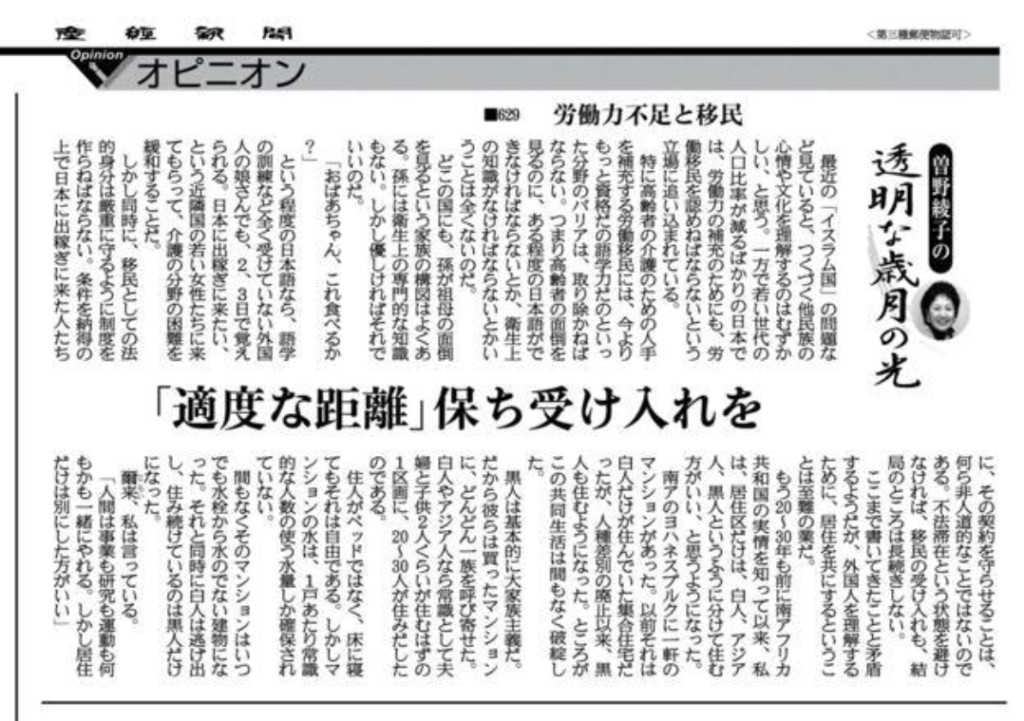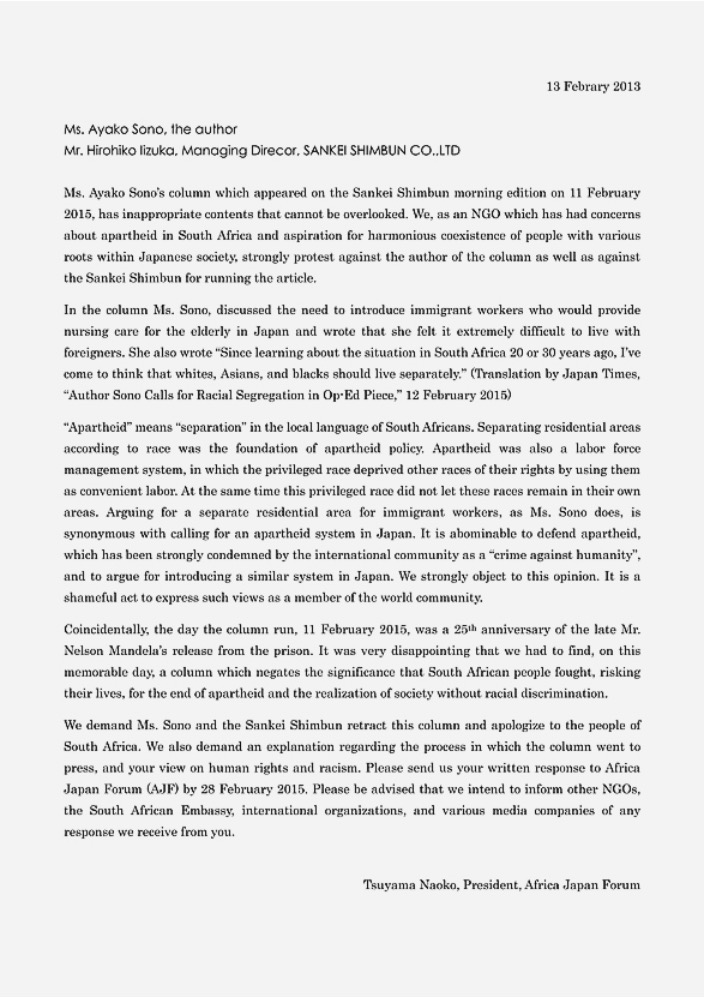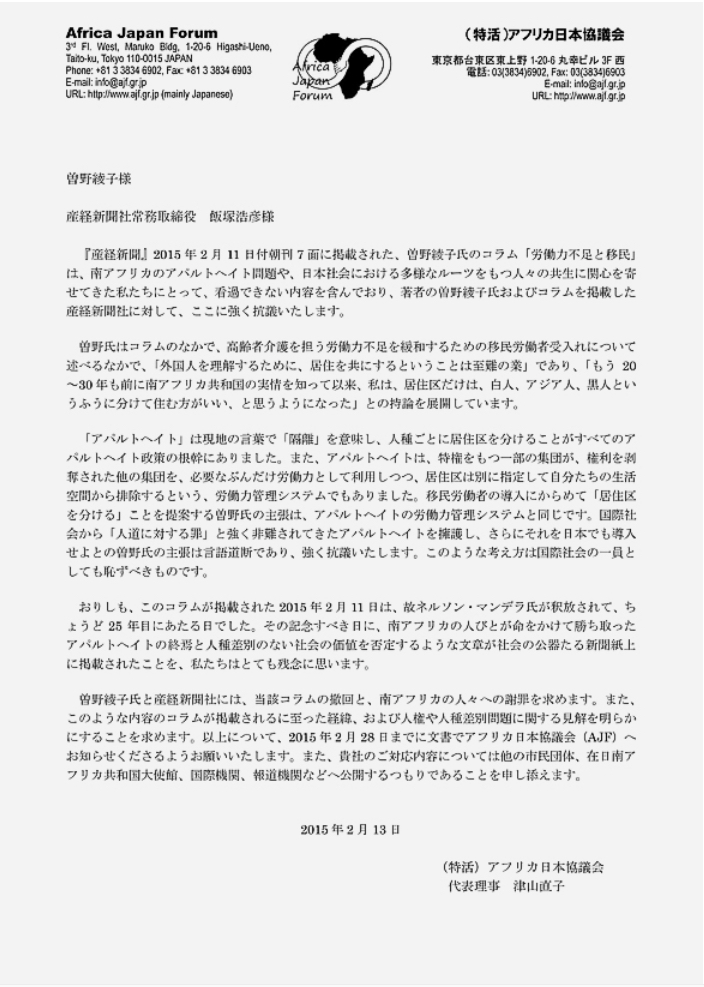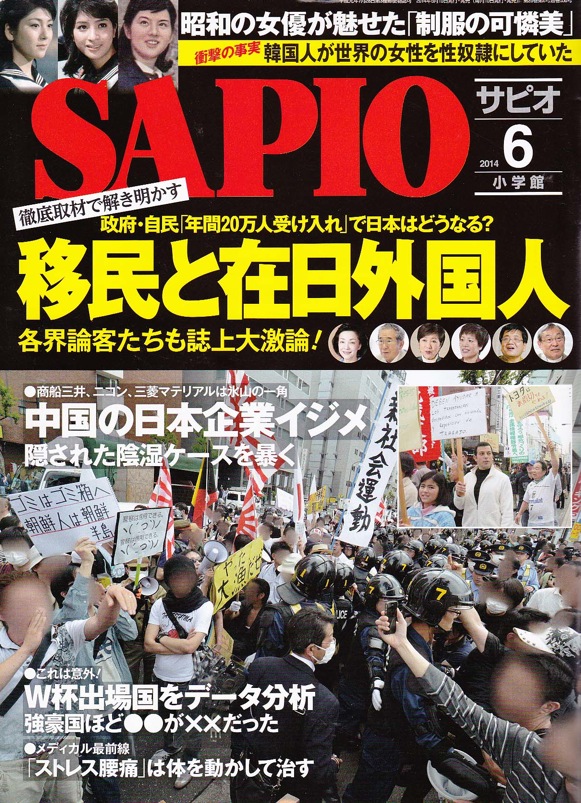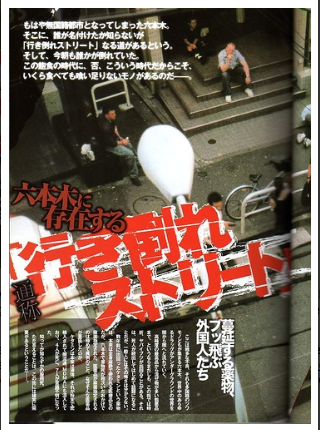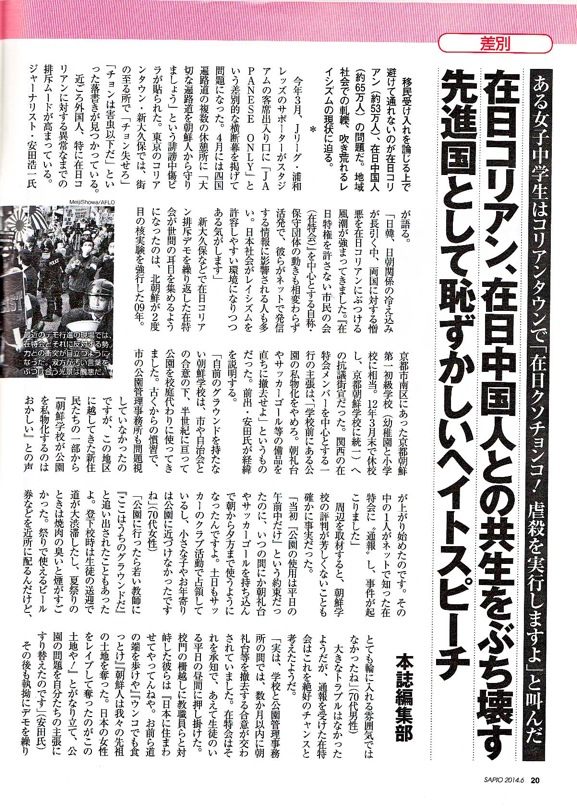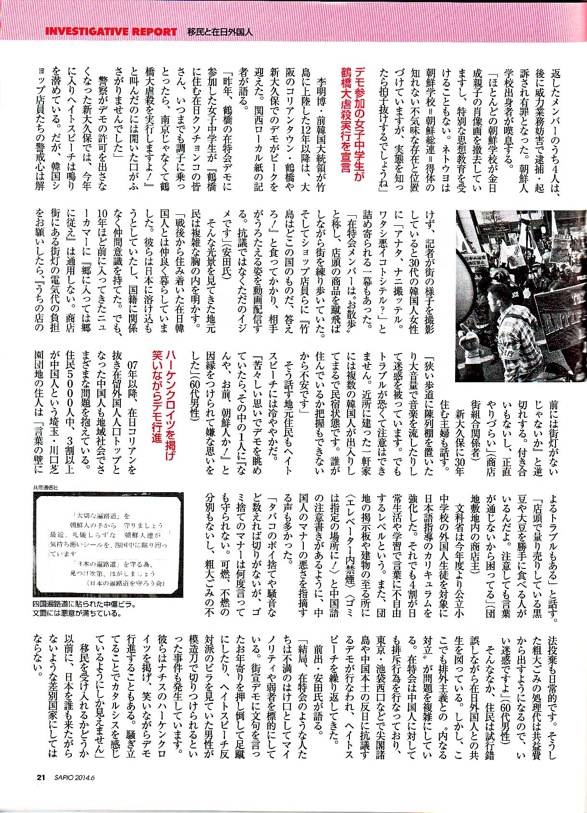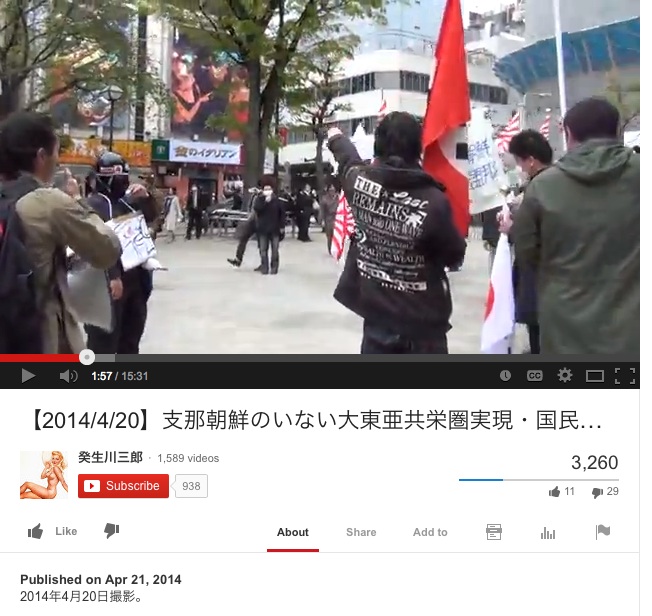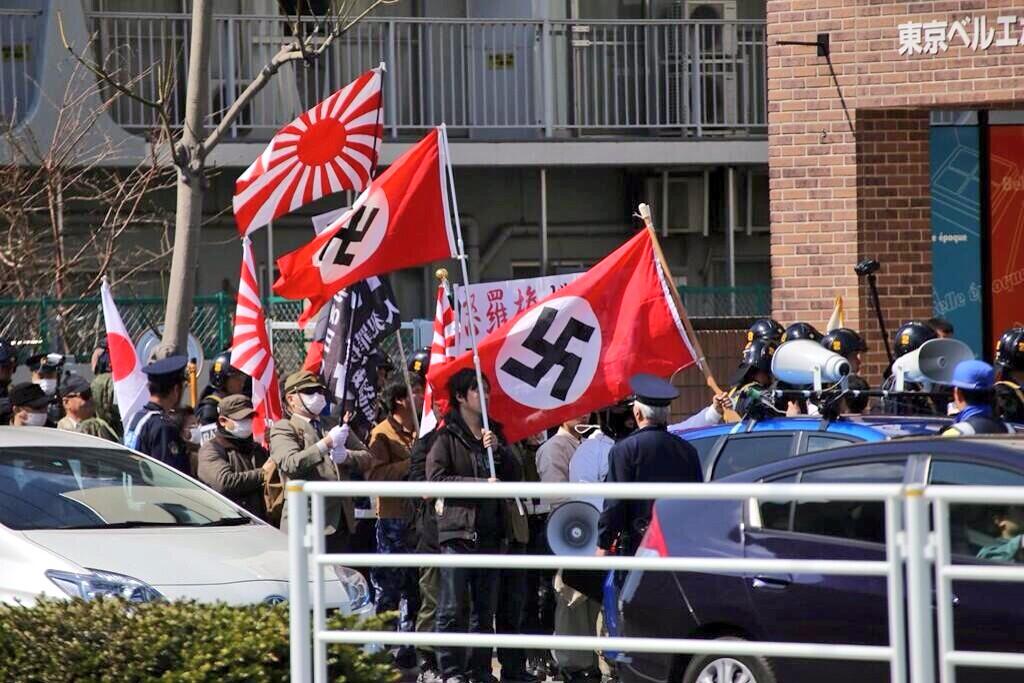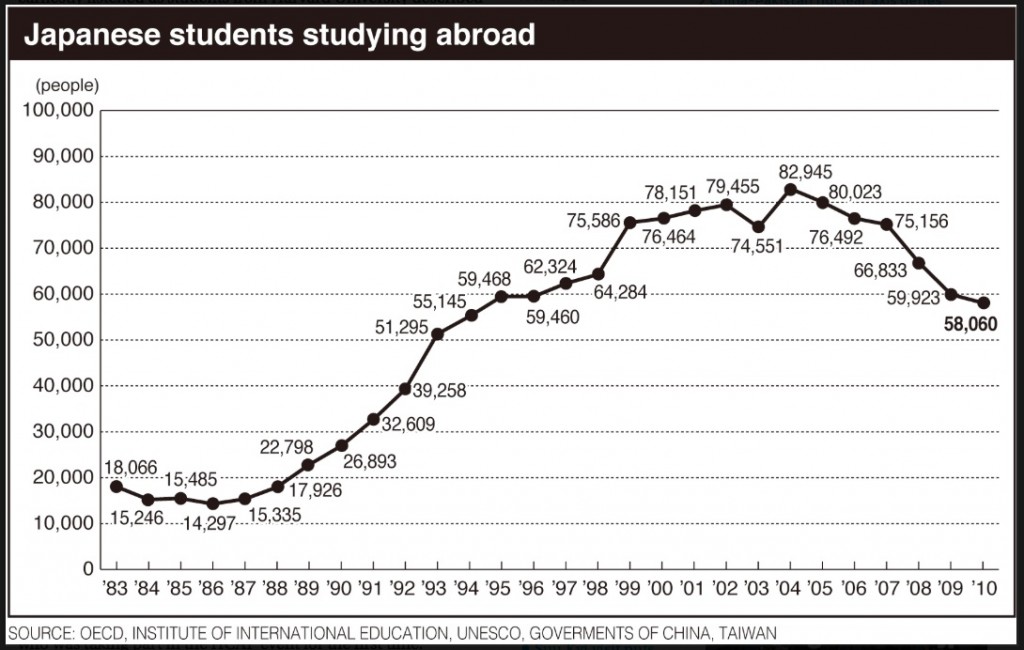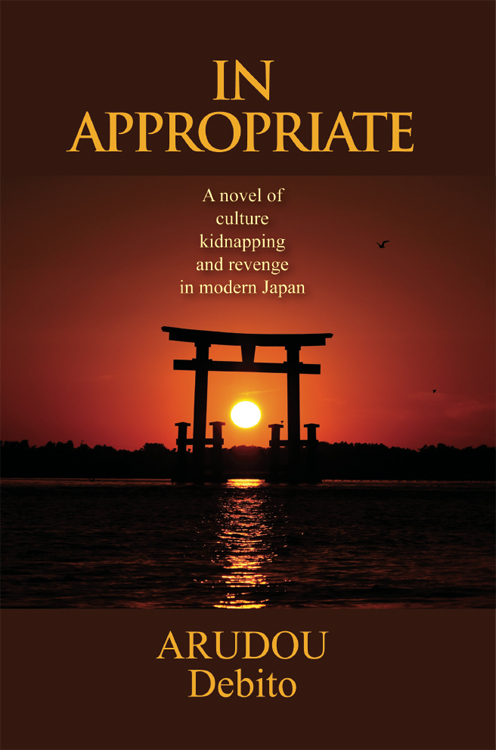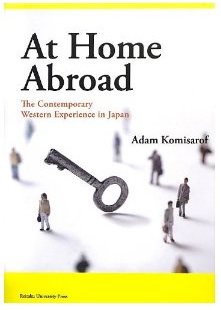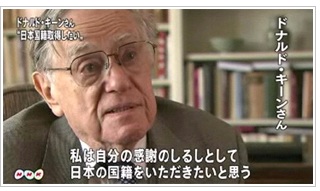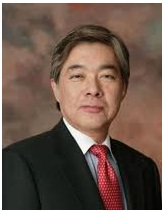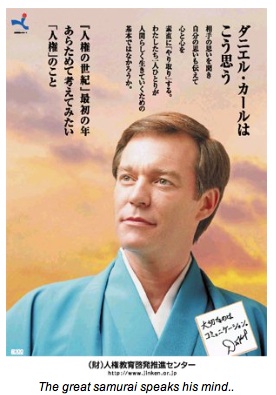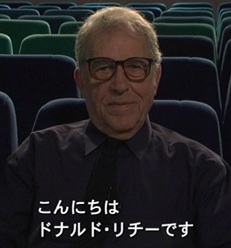mytest
Books etc. by ARUDOU Debito (click on icon):
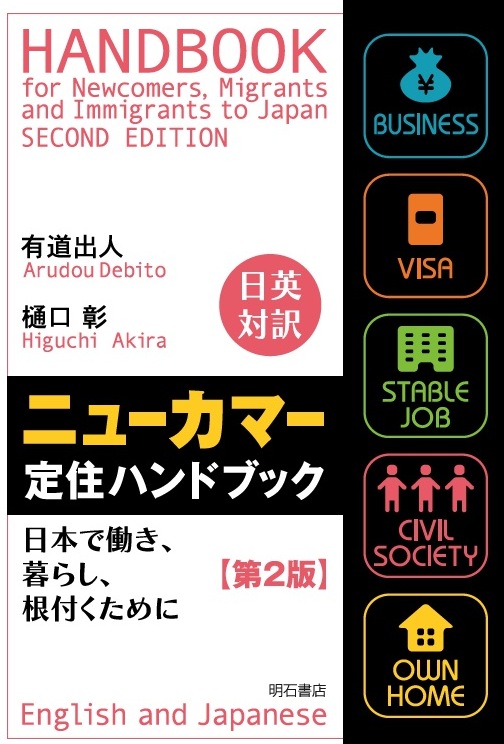
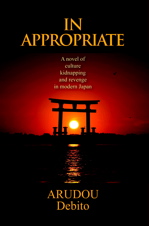



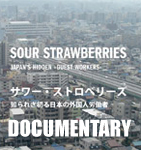

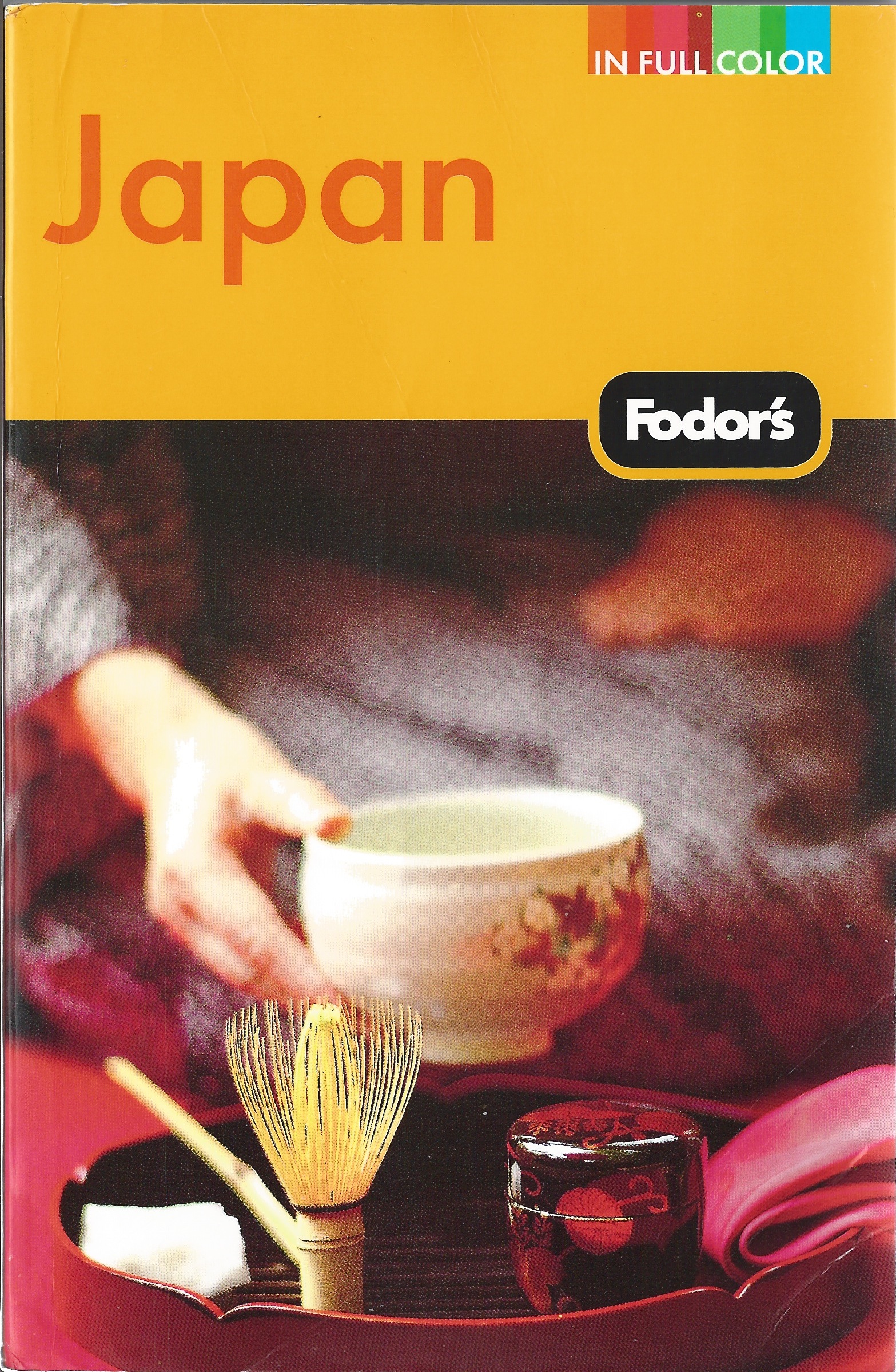
UPDATES ON TWITTER: arudoudebito
DEBITO.ORG PODCASTS on iTunes, subscribe free
“LIKE” US on Facebook at http://www.facebook.com/handbookimmigrants
Hi Blog. As part of a continuing series of how the Post-Fukushima Debacles have laid bare just how irredeemably broken Japan’s system is (see related articles here (item #2), here, here, here, here, here, here, here, and here), the NYT has just reported the latest on the Fukushima radiation cleanup effort. Within, we can witness a wonderful fusion of corruption, xenophobia, and unaccountable bureaucratic culture that have been symptomatic of why Japan as a society cannot not fix itself (see items #1-3). And this time, it’s a wonderful capsule summary of why foreign technology and assistance will lose out to featherbedded domestic interests (the Kensetsu Zoku, who are making a right mess of things). And how there’s no hope of it getting better since the corrupt corporatists who facilitated this system in the first place (LDP under Abe and co.) are back in power as of December with a fresh mandate. A choice excerpt from the NYT, very, very germane to the purview of Debito.org, follows:
===================
NYT: Japanese officials said adapting overseas technologies presented a particular challenge.
“Even if a method works overseas, the soil in Japan is different, for example,” said Hidehiko Nishiyama, deputy director at the environment ministry, who is in charge of the Fukushima cleanup. “And if we have foreigners roaming around Fukushima, they might scare the old grandmas and granddads there.”
(UPDATE: Original Japanese question and answer, courtesy of Hiroko Tabuchi (thanks!):
質問:なぜ除染事業に海外の業者や技術が採用されてないのか。
環境省福島除染推進チーム次長 西山 英彦:
(ストリップペイント等の除染技術については)「海外で有効なものでも、日本は土が違ったりしますから」
(除染事業全体を海外の会社が請け負うことについて)「外国人が福島をうろうろしてたら、お年寄りのおじいちゃんおばあちゃんが恐がるでしょう」
===================
(Here’s a picture of Nishiyama Hidehiko to burn into your memory cells, courtesy of Reuters:)
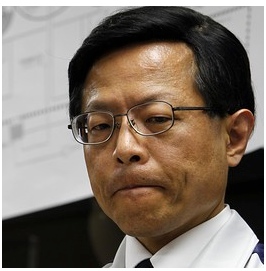
This is an incredibly racist insult to all the NJ who were both there and who went up there to help the victims of the disasters at great time, expense, and risk to their health — without scaring people. I have two articles below the NYT from the WSJ which outline what a horrible little fellow this Nishiyama is, and how he keeps bouncing right back into power despite scandal within Japan’s unaccountable bureaucracy.
After that, I have some links to previous comments on this article. I originally put this up yesterday as an addendum to a previous blog entry, but the comments there (see most of them in context here) are worth archiving here because they express the appropriate amount of outrage. About a system that is, in the end, betraying everyone. Kudos to NYT reporter Hiroko Tabuchi for uncovering this. Arudou Debito
/////////////////////////////////////////////
In Japan, a Painfully Slow Sweep
The New York Times, January 7, 2013
By HIROKO TABUCHI
See photos at http://www.nytimes.com/2013/01/08/business/japans-cleanup-after-a-nuclear-accident-is-denounced.html
NARAHA, Japan — The decontamination crews at a deserted elementary school here are at the forefront of what Japan says is the most ambitious radiological cleanup the world has seen, one that promised to draw on cutting-edge technology from across the globe.
But much of the work at the Naraha-Minami Elementary School, about 12 miles away from the ravaged Fukushima Daiichi nuclear power plant, tells another story. For eight hours a day, construction workers blast buildings with water, cut grass and shovel dirt and foliage into big black plastic bags — which, with nowhere to go, dot Naraha’s landscape like funeral mounds.
More than a year and a half since the nuclear crisis, much of Japan’s post-Fukushima cleanup remains primitive, slapdash and bereft of the cleanup methods lauded by government scientists as effective in removing harmful radioactive cesium from the environment.
Local businesses that responded to a government call to research and develop decontamination methods have found themselves largely left out. American and other foreign companies with proven expertise in environmental remediation, invited to Japan in June to show off their technologies, have similarly found little scope to participate.
Recent reports in the local media of cleanup crews dumping contaminated soil and leaves into rivers has focused attention on the sloppiness of the cleanup.
“What’s happening on the ground is a disgrace,” said Masafumi Shiga, president of Shiga Toso, a refurbishing company based in Iwaki, Fukushima. The company developed a more effective and safer way to remove cesium from concrete without using water, which could repollute the environment. “We’ve been ready to help for ages, but they say they’ve got their own way of cleaning up,” he said.
Shiga Toso’s technology was tested and identified by government scientists as “fit to deploy immediately,” but it has been used only at two small locations, including a concrete drain at the Naraha-Minami school.
Instead, both the central and local governments have handed over much of the 1 trillion yen decontamination effort to Japan’s largest construction companies. The politically connected companies have little radiological cleanup expertise and critics say they have cut corners to employ primitive — even potentially hazardous — techniques.
The construction companies have the great advantage of available manpower. Here in Naraha, about 1,500 cleanup workers are deployed every day to power-spray buildings, scrape soil off fields, and remove fallen leaves and undergrowth from forests and mountains, according to an official at the Maeda Corporation, which is in charge of the cleanup.
That number, the official said, will soon rise to 2,000, a large deployment rarely seen on even large-sale projects like dams and bridges.
The construction companies suggest new technologies may work, but are not necessarily cost-effective.
“In such a big undertaking, cost-effectiveness becomes very important,” said Takeshi Nishikawa, an executive based in Fukushima for the Kashima Corporation, Japan’s largest construction company. The company is in charge of the cleanup in the city of Tamura, a part of which lies within the 12-mile exclusion zone. “We bring skills and expertise to the project,” Mr. Nishikawa said.
Kashima also built the reactor buildings for all six reactors at the Fukushima Daiichi plant, leading some critics to question why control of the cleanup effort has been left to companies with deep ties to the nuclear industry.
Also worrying, industry experts say, are cleanup methods used by the construction companies that create loose contamination that can become airborne or enter the water.
At many sites, contaminated runoff from cleanup projects is not fully recovered and is being released into the environment, multiple people involved in the decontamination work said.
In addition, there are no concrete plans about storing the vast amounts of contaminated soil and foliage the cleanup is generating, which the environment ministry estimates will amount to at least 29 million cubic meters, or more than a billion cubic feet.
The contaminated dirt lies in bags on roadsides, in abandoned fields and on the coastline, where experts say they are at risk from high waves or another tsunami.
“This isn’t decontamination — it’s sweeping up dirt and leaves and absolutely irresponsible,” said Tomoya Yamauchi, an expert in radiation measurement at Kobe University who has been helping Fukushima communities test the effectiveness of various decontamination methods. “Japan has started up its big public works machine, and the cleanup has become an end in itself. It’s a way for the government to appear to be doing something for Fukushima.”
In some of the more heavily contaminated parts of Fukushima, which covers about 100 square miles, the central government aims to reduce radiation exposure levels to below 20 millisieverts a year by 2014, a level the government says is safe for the general public. But experts doubt whether this is achievable, especially with current cleanup methods.
After some recent bad press, the central government has promised to step up checks of the decontamination work. “We will not betray the trust of the local communities,” Shinji Inoue, the environment vice minister, said Monday.
There had been high hopes about the government’s disaster reconstruction plan. It was announced four months after the March 2011 disaster, which declared Japan would draw on the most advanced decontamination know-how possible.
But confusion over who would conduct and pay for the cleanup slowed the government response. It took nine months for the central government to decide that it would take charge of decontamination work in 11 of the heaviest-contaminated towns and cities in Fukushima, leaving the rest for local governments to handle.
In October, the state-backed research organization, the Japan Atomic Energy Agency, announced that it was soliciting new decontamination technology from across the country.
By early November, the agency had identified 25 technologies that its own tests showed removed harmful cesium from the environment.
A new system to trap, filter and recycle contaminated runoff, developed by the local machinery maker Fukushima Komatsu Forklift, was one of technologies. But since then, the company has not been called on to participate in the state-led cleanup.
“For the big general contractors, it’s all about the bottom line,” said Masao Sakai, an executive at the company. “New technology is available to prevent harmful runoff, but they stick to the same old methods.”
The Japanese government also made an initial effort to contact foreign companies for decontamination support. It invited 32 companies from the United States that specialize in remediation technologies like strip-painting and waste minimization, to show off their expertise to Japanese government officials, experts and companies involved in the cleanup.
Opinions on the trip’s effectiveness vary among participants, but in the six months since, not a single foreign company has been employed in Japan’s cleanup, according to the trip’s participants and Japan’s Environment Ministry.
“Japan has a rich history in nuclear energy, but as you know, the U.S. has a much more diverse experience in dealing with the cleanup of very complicated nuclear processing facilities. We’ve been cleaning it up since World War II,” said Casey Bunker, a director at RJ Lee, a scientific consulting company based in Pennsylvania that took part in the visit.
“There was a little of, ‘Hey, bring your tools over and show us how it works.’ But they ultimately wanted to do it themselves, to fix things themselves,” Mr. Bunker said. “There didn’t seem to be a lot of interest in a consultative relationship moving forward.”
Japanese officials said adapting overseas technologies presented a particular challenge.
“Even if a method works overseas, the soil in Japan is different, for example,” said Hidehiko Nishiyama, deputy director at the environment ministry, who is in charge of the Fukushima cleanup. “And if we have foreigners roaming around Fukushima, they might scare the old grandmas and granddads there.”
Some local residents are losing faith in the decontamination effort.
“I thought Japan was a technologically advanced country. I thought we’d be able to clean up better than this,” said Yoshiko Suganami, a legal worker who was forced to abandon her home and office over two miles from the Fukushima Daiichi plant. “It’s clear the decontamination drive isn’t really about us any more.”
Most of the clients at Ms. Suganami’s new practice in Fukushima city are also nuclear refugees who have lost their jobs and homes and are trying to avert bankruptcy. She said few expect to ever return.
ENDS
/////////////////////////////////////////
In Japan Rarity, Nuclear Spokesman Replaced After Affair Allegations
By Yuka Hayashi
Wall Street Journal, June 30, 2011, courtesy of JE
http://blogs.wsj.com/japanrealtime/2011/06/30/in-japan-rarity-nuclear-spokesman-replaced-after-affair-allegations/
Over the past few months, the world has been rocked by revelations of powerful men caught in sex scandals: Arnold and Anthony Weiner, to name a few. Now Japan has its own version, which this week claimed the scalp of Hidehiko Nishiyama, Tokyo’s former chief nuclear spokesman.

- Reuters
- Hidehiko Nishiyama was demoted from his role as the government’s chief nuclear spokesman on June 29 after rumors about an alleged affair with a young female employee unfurled.
Unlike the U.S., where online flirting costs politicians their jobs, the public in Japan is generally forgiving of powerful men involved in sex scandals. But not this time.
Mr. Nishiyama, a successful career bureaucrat at the Ministry of Economy Trade and Industry, was abruptly pushed out of his role Wednesday, less than a week after a news magazine reported an alleged affair between him and a younger female staffer at the ministry. While Mr. Nishiyama, 54, denied having a sexual relationship with the woman through a ministry spokesman, the colorful details reported in the article became a source of incessant gossip among the city’s elites.
Extra-marital affairs of politicians and business leaders are often viewed in Japan as they are in France – personal matters that should be left alone as long as they don’t interfere with their work — or dramatically offend people’s sensitivities. Some even consider such scandals as something the men should be proud of, as a sign of their power and personal charm.
Take Prime Minister Naoto Kan. In 1998, a news magazine reported his affair with a newscaster. He was called “You idiot!” by his wife, as he himself admitted, but suffered no lasting damage to his career. Paparazzi captured Goshi Hosono, a rising star of Mr. Kan’s ruling party, in a moment of passion with a TV reporter in 2006, but the 39-year-old married politician quickly put his career back on track; he just got appointed as Japan’s new nuclear minister on Monday.
Until recently, Mr. Nishiyama, who is married with two children, was known as a rising star within the ministry, but that hardly made him a public figure. That changed a few days after the March 11 disaster, when he was tapped to moderate the ministry’s daily briefings on the accident. With his articulate answers and knowledge of the power industry gained through his previous assignments, he became a familiar face on national television.
Mr. Nishiyama will now return to his pre-March 11 job in the ministry’s trade bureau, where his primary responsibility is to move Japan toward participating in a controversial regional trade agreement called the Trans-Pacific Partnership.
“I apologize if (the report) gave the impression or invited concerns that I was not fully committed to my job” Mr. Nishiyama said last week. Yukio Edano, chief government spokesman, said Wednesday Mr. Nishiyama was relieved of his responsibility due to “concerns that (the scandal) would interfere with his duties.”
ENDS
==================================
Wall Street Journal, November 18, 2011
Bureaucratic Fallout
By Yoree Koh and Yuka Hayashi
http://blogs.wsj.com/japanrealtime/2011/11/18/bureaucratic-fallout/
It has been a punishing day for Japan’s nuclear officials.
Environment Minister Goshi Hosono said Friday he would forgo his monthly cabinet salary of Y1.5 million, or roughly $20,000, to take responsibility for an employee of his ministry dumping radioactive soil sent from Fukushima prefecture near his backyard in Tokyo’s suburbs.
As the minister also overseeing the cleanup of the nuclear crisis, Mr. Hosono said the insensitive behavior exhibited by his staff ultimately falls on his shoulders. (He will continue to collect his Y1.3 million monthly income as a member of parliament).
Penalties were also imposed on the environment vice ministers, who will face a 20% pay cut for two months. Others involved have been transferred to other positions and given stern warnings.
The penalties come the day after Mr. Hosono revealed that an environment ministry employee threw soil with trace amounts of radiation away in a vacant lot near his home last week. The soil was sent to the ministry from a Fukushima resident, who had asked the ministry to get rid of the soil. Tests of the soil detected radiation of about 0.18 microsieverts per hour – a low level deemed safe.
Looking ever more haggard since becoming the central government’s captain in charge of the Fukushima Daiichi accident soon after March 11, Mr. Hosono said at a press conference Friday: “What is behind this is the feeling among Fukushima residents that the government has not been implementing its responsibility for handling contaminated soil and should be doing more. I do not think I will be able to gain understanding of people in Fukushima with something like this,” according to state broadcaster NHK.
Separately, the environment ministry has taken in a familiar face to help oversee the soil decontamination effort. Hidehiko Nishiyama, a former government nuclear spokesman disgraced by a sex scandal, has been named deputy chief of a special team for decontamination of Fukushima, set up within the ministry of environment, a spokeswoman for the Ministry of Economy, Trade and Industry said Friday.
Mr. Nishiyama, once a rising star at the METI, became a television star soon after the March accident at the Fukushima Daiichi plant as a well-spoken, never-tiring spokesman for the Nuclear and Industrial Safety Agency, the ministry’s nuclear regulatory body. But he lost the high-profile job in June after a weekly magazine carried a detailed account of his extramarital affair with a female staffer of the ministry. Mr. Nishiyama apologized at the time for the trouble the allegations had caused. On Sep. 30, the ministry formally suspended the 54-year-old career bureaucrat for one month for having been engaged in “inappropriate” sexual conduct during working hours at the height of the nuclear crisis.
Mr. Nishiyama still remains an employee of the METI but will now be on lease to the environment ministry. The 54-year-old elite bureaucrat joined the ministry in 1980 after graduating from Tokyo University. Mr. Nishiyama wasn’t available for comment.
ENDS
/////////////////////////////////////////////
COMMENTS:
AB: Like the classic “gaijin skis won’t work on Japanese snow” absurdity van Wolferen (?) wrote about 20 years ago. Unbelievable this crappola is still going on. Only gonna get worse with LDP back in the saddle. To paraphrase de Tocqueville “a people gets the government it deserves”
=======================
CD: i wonder the extent to which this statement is a convenient misdirection. it’s much easier to spew out some xenophobic nonsense than to publicly admit that fukushima has been written off. i mean, the place was written off the moment they built the plants. but what japanese politician or bureaucrat is going to admit to that? much easier to say grandma and grandpa might get scared by gaijin.
=======================
AB: No one — at least no one IN JAPAN — is EVER going to admit this (even though it’s true). It’s like the same-old same-old — everyone afraid of being tarred with the “Hikokumin brush” and being called “defeatist” or a “dream-destroyer” (yume wo kowasu hito).
Same dynamic that kept everyone with half a brain enough to see what was going on otherwise silent as Imperial Japan lurched toward — then plunged into — a suicidal war in 1941.
=======================
EF: This is private life, [Nishiyama] does with his tin-tin whenever he wants. What concerns us is his racist profile and he attacking foreigners this way again after all foreigners have done for the victims in Fukushima because, at the time of the hard cleaning up, many foreigners were there removing the corpses along with the Japanese and no one seemed scared by our presence.
=======================
GH: [Nishiyama’s] comments are already noted on his Wikipedia page under 日本人論的・差別的発言.
=======================
IJ: Pathological racism. Just like how they couldn’t use the U.S. military’s rescue helicopters in Kobe. The Japanese air is different so the pilots might not have been able to fly in Japanese airspace… and the U.S. and French doctors might have scared the earthquake victims to death. But it was really the swiss search dogs that would have been the biggest problem. Japanese dog food is so different. LOL … What a frigging mess Japan is in. Gladder and gladder I voted with my feet years ago.
=======================
KL: So the local victims have to suffer because of the racism of the authorities?! But I guess the little people don’t matter…
=======================
MN: I know the real reason foreign companies were not invited to take part. I have a relative who works for a major general contractor (maybe even one mentioned in the article). He tells me that ALL (not some, ALL) of their business is carried out in cash for the single purpose of ensuring bribes go smoothly. Foreign companies are not above this. They just don’t know how to play the game.
=======================
JDG: Yet another microcosm for all that is wrong with Japan. If the J-public (especially the victims of the disaster) are going to persist in taking it lying down (and unlubricated!), then I can’t see much hope for the future.
=======================
GP: Instead, there are now armies of cheap laborers washing down buildings with water and scraping topsoil off schoolyards and dumping it in local rivers – simply spreading the contamination even further while they toil to line the coffers of companies with the juicy cleanup contracts – companies that just conveniently are linked to the nuclear industry. And this is a first world country?
The final comment from the environment ministry really said it all though. This almost reads like a sarcastic joke referencing the “Japan has different snow” tactics of yester-year, with a fine dash of xenophobia thrown in for good measure. Can’t have any nasty furriners scaring the oldies!! (Let’s conveniently ignore the fact that hundreds of foreigners if not thousands have already given their time, money and labor to cleanup and rebuild in Tohoku, and by all accounts their assistance was warmly welcomed).
=======================
JDG: ATTENTION APOLOGISTS!
Since you obsessively check this site, please read Debito’s post #23 and explain to me;
- How this is simply one small isolated case of government and business collusion in corruption, and does by no means indicate that ‘Japan Inc.’ is broken?
- How does this prove that the Fukushima situation is fully safe and under control, and being managed in a transparent fashion?
- How does the following statement;’“Even if a method works overseas, the soil in Japan is different, for example,” said Hidehiko Nishiyama, deputy director at the environment ministry, who is in charge of the Fukushima cleanup. “And if we have foreigners roaming around Fukushima, they might scare the old grandmas and granddads there.”’, prove that rather than racism being endemic in the heart of the Japanese state, I am simply an over sensitive moaner who can’t understand Japan’s unique culture?
- How does this article prove that all Japan reporting is shoddy in nature, and biased unfairly against Japan?
- How does this statement by a displaced Fukushima resident; ‘“It’s clear the decontamination drive isn’t really about us any more.”’ clearly reek of unfair and scientifically unsound anti-nuclear lobby alarmism?
By all means, please take this opportunity to show us all where we have being getting it so wrong for all these years in our criticism of Japan.
=======================
ENDS
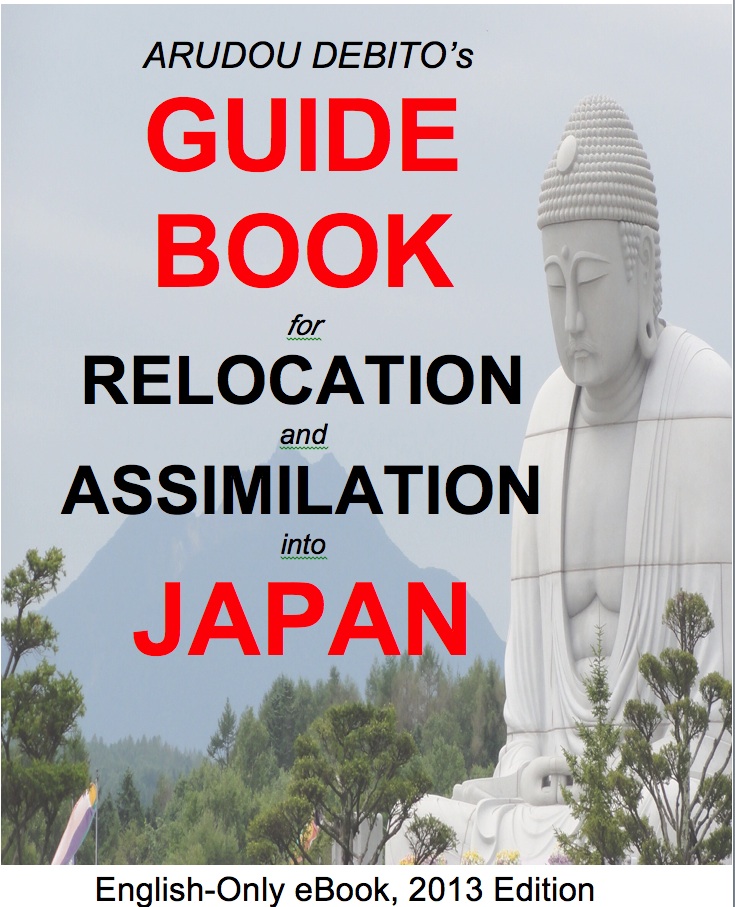
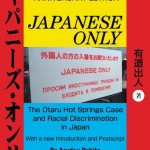



![]()



